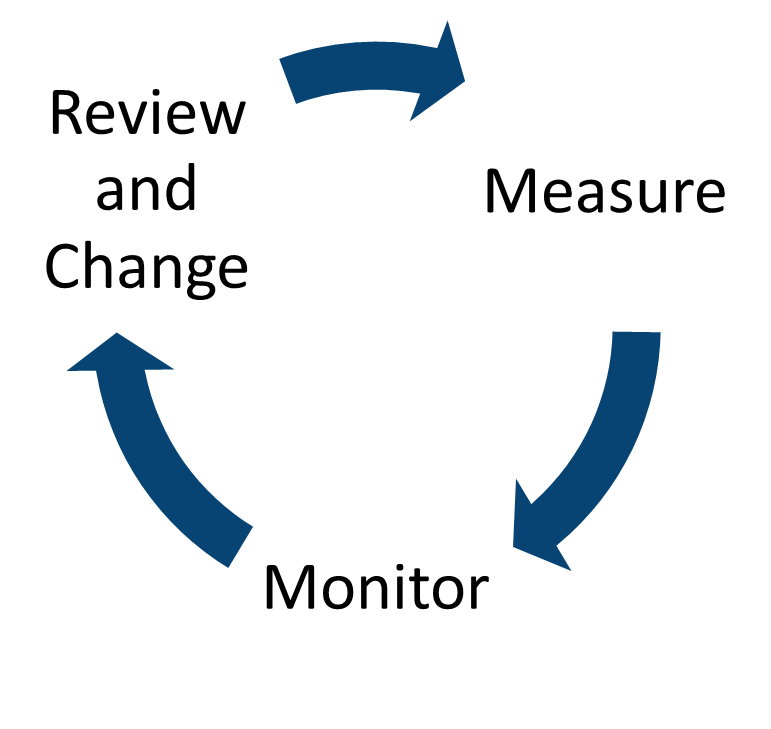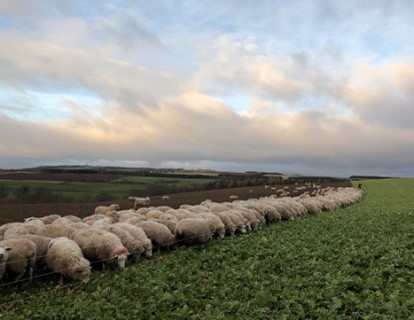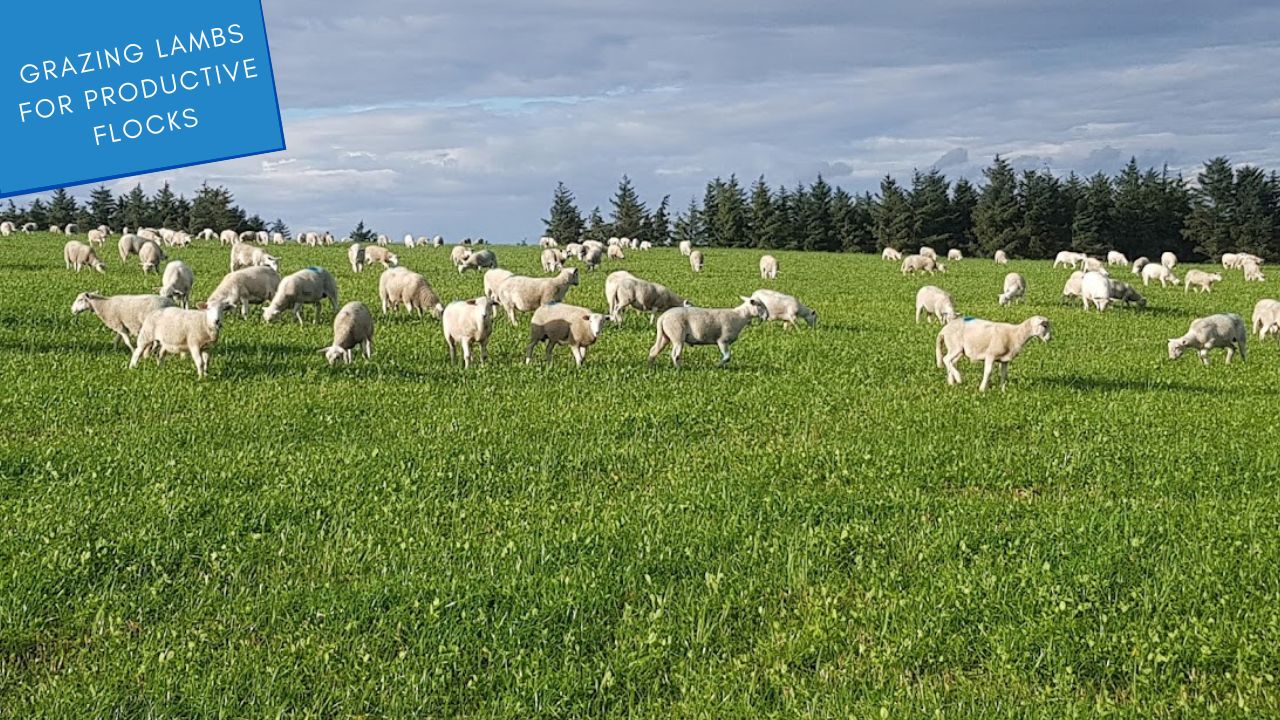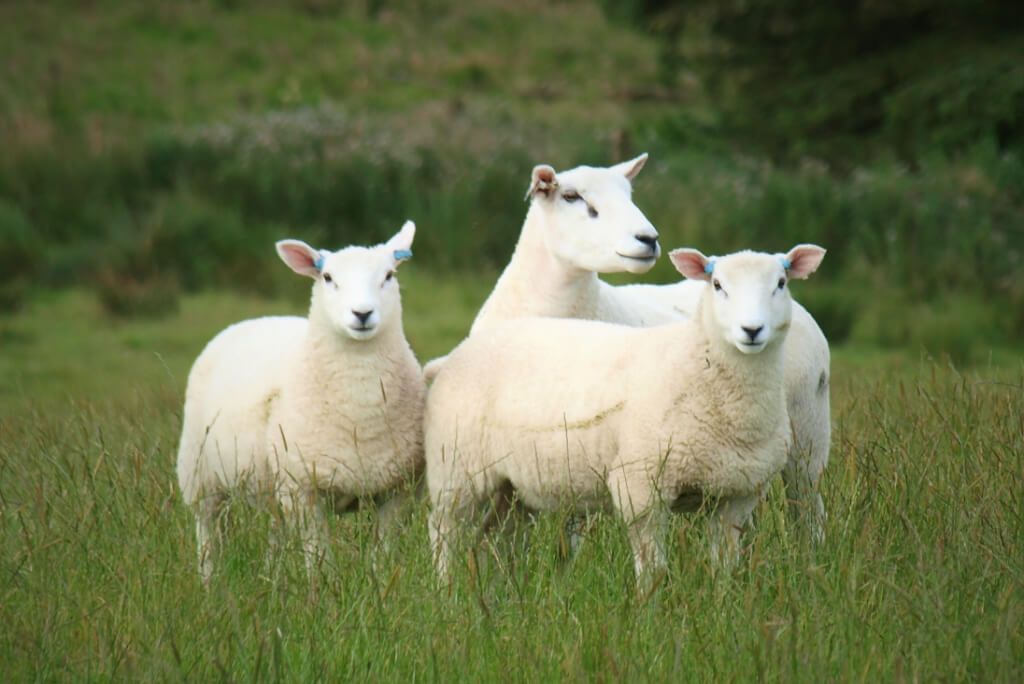Lamb Performance – Post Weaning
6 July 2023As summer progresses thoughts turn to weaning of lambs. This factsheet highlights management of lambs post weaning to maximise growth rates, while ensuring forage is available for the next lamb crop. This includes, reducing stress, regular weighing and monitoring, nutrition, internal parasites and minerals and vitamins.

Target Setting
While lambs are most efficient at converting food to liveweight when they are younger, excellent performance can be achieved post weaning with good grassland management, health and targeted supplementation.
A good target to have is 70% of lambs sold prior to tupping. The longer lambs are on farm, the greater pressure there can be on grazing systems when grass growth slows down in the autumn. The focus here should be on the next years lamb crop, ensuring the ewes have adequate forage supplies, to maximise the number of lambs conceived and that both the ewe and the embryos survive through the winter.
Lamb performance can be maximised through:
- Regular monitoring
- Nutrition
- Health
Reduce Stress to Improve Performance
Stress in lambs can reduce their performance. To minimise stress associated with weaning, return lambs to their previous field where they know where to source water, shelter, etc. After a few days, move the lambs onto a high-quality sward to enhance nutrition and growth. If the high-quality pasture is a herbal or red clover mix, then introduce this before weaning to allow the lambs to transition on to the different forage.
In addition, to reduce stress, keep ewes and lambs out of sight and sound of each other to minimise calling to one another. Avoid the temptation to carry out additional stressful tasks on weaning day, e.g., vaccination and worming, to keep handling to a minimum.
Weighing the lambs at weaning and batching them in to three groups is advised, to allow for tailored nutrition to these groups. This also assists with reducing labour as only the heaviest lambs will require weekly weighing to select for slaughter.
| Long Keep | Medium Keep | Short Keep | |
|---|---|---|---|
| Weight at Finishing | Under 30kg | 30 - 35kg | Over 35kg |
| Time to Finish | +12 weeks | 6 - 12 weeks | 6 weeks and under |

Regular Monitoring
Monitoring by regularly weighing lambs, gives an understanding if the current management is effective. This management may be the feeding e.g., mineral deficiency or health e.g., worms holding back the potential of the lamb. Always compare the latest weight data, to the previous, to understand the average weight gain. This regular monitoring allows you to review and change your management in real time.
The targets for lamb growth are shown below, these should be used as a guide, along with weighing and monitoring growth.

| Timing | Daily Target | Cumulative Target |
|---|---|---|
| 0-56 days (8 weeks) | Over 320 grams/day | Over 280grams/day to 90 days (an average of 30kg at weaning) |
| 67-90 days (weaning) | Over 240 grams/day | |
| Post weaning for finishing summer and autumn | Over 150 grams/day pasture and aftermath | Over 250 grams/day from birth to sale for spring lambing flocks aiming to finish most lambs off grass |
| Over 180 grams/day aftermath or high clover sward | ||
| Over 200 grans/day forage crops and herbal leys | ||
| Over 300 grams/day red clover and creep feeding |
Ideally lambs are weighed at regular intervals after weaning.
Tips for weighing
- Weigh in groups that allow uniformity e.g. Scottish Blackface singles and Mule twins separately.
- Weigh off grass to limit the effect of gut fill (this can be 5kg for lambs), if the lambs are standing in yards pre weighing, do the same next time to be consistent.
- Check scales are accurate by calibrating e.g. an unopened bag of minerals with a known weight.
- When a group look even, weigh 56 lambs randomly e.g. 1 in 6 lambs down the race, deducting the heaviest three and the lightest three.
- For an uneven group weigh 86 lambs, again randomly and deducting the top and bottom three weights.
The three major attributes that influence growth rates on lambs are: nutrition, internal parasites, and minerals and vitamins.
Nutrition
Lamb growth rates are largely determined by the nutrition that is offered to them. Grass is the cheapest form of nutrition for lambs, but if this is in short supply then supplementary feeding will be required. The best grass to offer to lambs is a short leafy sward or species rich swards, these generate a high intake, and offer excellent nutrition, which drive good growth rates. New reseeds and silage aftermath are an excellent option as these have a low risk for parasites such as worms. Mature and stemmy swards should be avoided as these have lower digestibility, energy and protein compared to the short swards and therefore result in lower growth rates.
The ideal grazing heights for weaned and finishing lambs are as follows:
| Rotational Grazing | Set Stocked | |
|---|---|---|
| Pre-graze | Residual | Continuous |
| 10 - 12cm | 5 - 7cm | 6 - 8cm |
If the grass is grazed too low, the lamb’s performance can be compromised. A leader – follower system can fit well to assist with managing the grass, where the lambs graze the field first, followed by a less productive group of animals e.g., gimmers, heifers, dry ewes, etc. The grass at the bottom of the sward is generally poorer quality, therefore this approach keeps the sward tidy whilst providing the best pick of grass to the growing lambs.
For those rotationally grazing, rest period will increase as the season progresses and grass growth slows down. In late summer the rotation length is generally 30 days and can then be extended to 45 days in the Autumn. This will vary with the weather and growing conditions.
Medium and long keep lambs are often offered additional nutrition, such as forage crops. These boost performance during the months that grass growth is limited. There are two types of forage crop – leafy and bulb. Leafy crops tend to be high in protein, while bulbs are high in energy. As the leaf dies back on leafy and bulb crops, then the lambs require a protein supplement which is often offered in concentrate feeding. Forage crops should make up no more than 70% of the animals daily dry matter intake, with the remaining 30% coming from additional forage (silage or hay) to prevent issues such as anaemia.
Concentrate Feeding
Concentrate feeding can be introduced to assist in substituting forage, when it may be scarce, for example, due to drought at weaning or limited autumn/winter growth. Lambs have a higher feed conversion the younger they are, meaning concentrate feeding early in life is more cost-efficient. However, feed can be a high input cost and it should be costed and justified before purchase.

Typically, the prime lamb price is high in the spring, when the number of lambs being marketed is lower, this peaks in June. For early lambing flocks concentrate feeding plays a large role here to marketing lambs while the market is buoyant. As grass fed lambs enter the market at speed, the lamb price reduces as supply outweighs demand. For lambs in the end of the year who are lacking finish then cost comparisons should be made to invest in feed or to sell store. To build frame and fat, protein and energy is required, this can be challenging on winter grass. Grass must be prioritised for the breeding flock to maximise the following years lamb crop. For these reasons, some choose to house late lambs and offer an ad lib diet which can be cost-effective to get a quick finish on lambs.
Concentrate feeding should be introduced gradually, it should be kept fresh and the when the lambs are on ad lib, it shouldn’t run out. This will ensure high intakes and limit gorging of feed. Long fibre (hay or straw) should be offered at all times, to buffer the rumen.
When purchasing a concentrate feed it should ideally be:
- 15% crude protein (fresh)
- 12.5MJ /kg DM of Metabolise Energy (ME)
This energy level is not often stated on a feed label, to identify a high energy feed, look for high quality ingredients at the start of the label e.g. cereals, sugar beet pulp, dark grains, etc. Avoid feeds containing high levels of lower energy feeds such as malt culms, palm kernel, etc.
If home mixing, ensure a lamb finishing mineral is added. To avoid sorting of ingredients, a low rate of molasses could be used in the mix.
Tips for indoor finishing
- There is a space requirement of 0.7-0.9m2 per lamb on straw.
- Good ventilation in the shed is essential.
- Access to the feeding area should be:
| Trough | Hopper | |
|---|---|---|
| Per Lamb | 300 - 400mm | 100mm |
Feed conversion is affected by health, environment, genetics, age and maintenance to name a few.
Internal Parasites
Growth rates can be severely impacted if lambs have internal parasites such as worms or fluke.
The use of faecal egg count should be used to understand the number of worm eggs in the lambs dung. Faecal egg counting helps:
- Understand the potential impact on lambs: if there are worms, how severe the burden is and if the lambs need treated,
- Determine whether the treatment was effective with pre- and post- wormer testing,
- Establish how contaminated the pasture is.
To do a faecal egg count, you require a fresh sample of dung (<48 hours old) from either 10 individual animals or from gathering your lambs in to a corner and picking up fresh samples when they move. These should then be submitted to your vet while fresh in an air tight container or bag.
The results when received, are shown in the number of eggs per gram (epg), showing the number of worm eggs in the gut of the sheep. Results should always be discussed with your local vet, and a control plan agreed.
There is a fantastic resource online to assist with worming decisions - SCOPS | Sustainable Control of Parasites in Sheep
Minerals and Vitamins
Deficiency of minerals and vitamins can impact the performance and productivity of weaned lambs. Diagnosis of such problems can be difficult to diagnose, with signs varying from poor growth rates to high mortality. Samples can be analysed from various different sources to build a picture of deficiency risk, e.g. soils, forage, blood or liver samples, and should be discussed with your vet and nutritionist.
In deficiency scenarios, the whole group is typically affected, rather than specific lambs. The most common deficiencies in growing lambs include,
- Copper
- Cobalt
- Selenium/Vitamin E
For further information - fas.scot/downloads/trace-element-supplementation-in-sheep-flocks/
Useful Resources
Sign up to the FAS newsletter
Receive updates on news, events and publications from Scotland’s Farm Advisory Service


